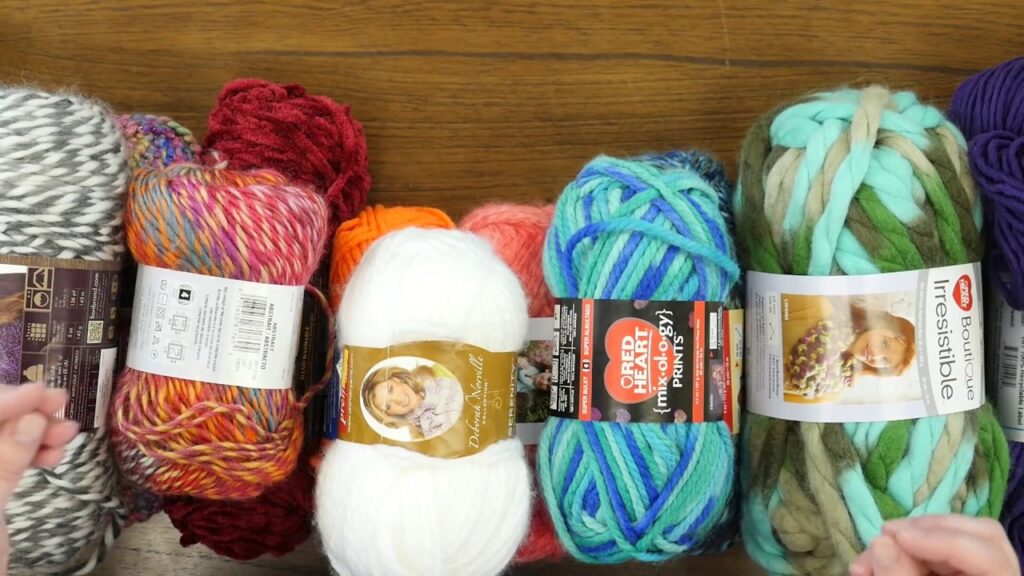A Guide to Understanding, Selecting, & Using Yarn
There are many different types of yarn, including multiple-plied yarn, sock yarn, brushed yarn, boucle yarn, chenille yarn, felting wool, and superwash wool.
In recent decades, yarn manufacturing has advanced and different types of yarn have exploded onto the market. Yarn is generally divided into animal, plant, and acrylic fibers, and each of these fibers can be spun into a variety of yarns. All the different fibers, textures, and colors can be overwhelming for a novice knitter. Here is an overview of different types of yarn a knitter may encounter when buying yarn for a project.
Types of Yarn
The most basic yarn, and what most people think of when they think “yarn,” is multiple-plied yarn. A ply is a thread of yarn, and most yarns are made of two, three, or four of these threads twisted together. Plied yarn is generally smooth, easy to work with, and works with any project.
- Cabled yarn is plied yarn plied together, which gives the yarn an intricate, braided look.
- Sock yarn is basically a thin, usually super fine, yarn that has qualities that make it particularly good for knitting socks. Although any yarn can be used for knitting socks, yarn specifically designated as sock yarn is usually a wool or wool blend for warmth, has elasticity and absorption, and often comes in stripes or some other fun multi-color.
- Boucle yarn is two plies. One-ply is looped and secured around a central binder thread. This type of yarn has small loops sticking out, so it may be difficult to knit with as it may be hard to grab and may snag the needles. It helps to double it up with a simple plied yarn in a matching or complementary color to give the needle something solid to grab and to help see the stitches in case the knitter makes a mistake.
- Brushed yarn has a fuzzy halo. It is made by taking a knitted or boucle yarn and brushing it to release some of the fibers.
- Chenille yarn is made of very short fibers sticking out from a central binder thread. It looks a little bit like a pipe cleaner. The fibers make this yarn very soft, but there can be a problem with worming, where the fibers work their way out of the yarn and out of the knitted project. One way to prevent this is to knit a very tight fabric to keep the fibers in place.
- A thick/thin yarn has varying thickness throughout its length. It’s usually a single-ply of wool. It can add texture to a simple knit pattern.
There are also many types of novelty yarns. Manufacturers are always coming up with new textures and embellishments on yarn, including eyelash yarn, yarn with sequins, yarn that feels like suede, and yarn that naturally knits up in a ruffle. These yarns can be used for smaller projects like hats or scarves or used together with other yarns to accent a project.
Felting Wool versus Superwash Wool
When buying wool, a knitter needs to check the ball band to make sure that the wool can be used in the way needed by the project. If the project needs to be machine-washable, for example, a child’s garment, then make sure that the wool is superwash or is specifically identified as machine-washable. If it isn’t, then the wool will have to be hand-washed or it will felt.
Any wool that hasn’t been specially treated to be machine-washable will felt, but some wools and wool blends are specifically designated for felting. These are usually simple multiple-plied yarns, are slightly rough or scratchy to the touch, and often come in an ombre or multi-color that gives the project a beautiful color pattern when felted.
Source:
Parkes, Clara. The Knitter’s Book of Yarn: The Ultimate Guide to Choosing, Using, and Enjoying Yarn. New York: Potter Craft, 2007.

